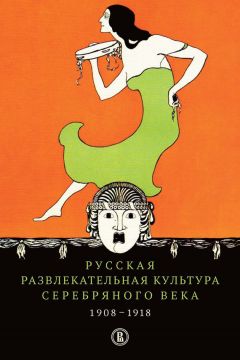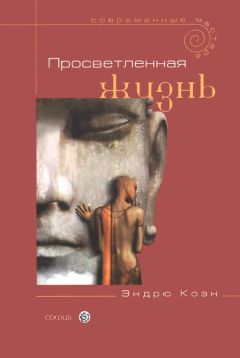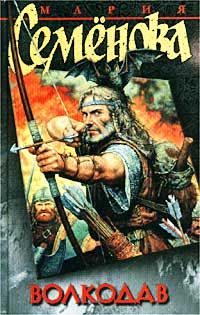Николас Уэйд - На заре человечества: Неизвестная история наших предков
60
Faraneh Vargha-Khadem et al., «FOXP2 and the Neuroanatomy of Speech and Language,» Nature Reviews Neuroscience 6:131–138 (2005).
61
Wolfgang Enard et al., «Molecular Evolution of FOXP2, a Gene Involved in Speech and Language,» Nature 418:869–872 (2002).
62
Svante Paabo, interview, August 10, 2002.
63
Richard Klein, The Human Career, University of Chicago Press, 1999, p. 492.
64
Причина, вероятно, в том, что соперничество между митохондриями внутри клетки было бы слишком разрушительным. Митохондрии сперматозоида как бы несут на себе химический ярлык «Убей меня». Лишь только сперматозоид проникнет в яйцеклетку, его митохондрии разрушаются. В яйцеклетке имеется около 100 000 своих митохондрий, и она не нуждается в сотне, предлагаемых сперматозоидом. Douglas C. Wallace, Michael D. Brown, and Marie T Lott, «Mitochondrial DNA Variation in Human Evolution and Disease,» Gene, 238:211–230 (1999).
65
Peter A. Underhill et al., «Y Chromosome Sequence Variation and the History of Hu man Populations,» Nature Genetics, 26:358–361 (2000).
66
S. T. Sherry, M. A. Batzer, and H. C. Harpending, «Modeling the Genetic Architecture of Modern Populations,» Annual Review of Anthropology 27:153–169 (1968).
67
Jonathan K. Pritchard, Mark T. Seielstad, Anna Perez-Lezaun, and Marcus W. Feldman, «Population Growth of Human Y Chromosomes: A Study of Y Chromosome Micro-satellites,» Molecular Biology and Evolution 16:1791–1798 (1999).
68
P A. Underhill, G. Passarino, A. A. Lin, P Shen, M. Mirazon-Lahr, R. A. Foley, P J. Oefner, and L. L. Cavalli-Sforza, «The Phylogeography of Y Chromosome Binary Haplotypes and the Origins of Modern Human Populations,» Annals of Human Genetics 65:43–62 (2001).
69
S. T. Sherry et al., «Modeling the Genetic Architecture of Modern Populations,» p. 166.
70
Richard Borshay Lee, The iKung San, Cambridge University Press, 1979, p. 31.
71
Tom Giildemann and Rainer Vossen, «Khoisan,» in Bernd Heine and Derek Nurse, eds., African Languages, Cambridge University Press, 2000.
72
Yu-Sheng Chen et al., "mtDNA Variation in the South African Kung and Khwe – and Their Genetic Relationships to Other African Populations, "American Journal of Human Genetics 66:1362–1383 (2000). The team sampled a group of IKung from the northwestern Kalahari Desert known as the Vasikela IKung.
73
Alec Knight et al., «African Y Chromosome and mtDNA Divergence Provides Insight into the History of Click Languages,» Current Biology 13:464–473 (2003).
74
Nicholas Wade, "In Click Languages, an Echo of the Tongues of the Ancients, "New York Times, March 18, 2003, p. F2.
75
Ornella Semino et al., «Ethiopians and Khoisan Share the Deepest Clades of the Human Y-Chromosome Phylogeny,» American Journal of Human Genetics 70:265–268 (2002).
76
Donald E. Brown, Human Universals, McGraw-Hill, 1991, p. 139.
77
Henry Harpending and Alan R. Rogers, «Genetic Perspectives on Human Origins and Differentiation,» Annual Review of Genomics and Human Genetics 1:361–385 (2000).
78
Richard Borshay Lee, The IKung San, Cambridge University Press, 1979, p. 135.
79
Jon de la Harpe et al., «Diamphotoxin, the Arrow Poison of the IKung Bushmen,» Journal of Biological Chemistry 258:11924–11931 (1983).
80
Richard Borshay Lee, The IKung San, p. 440.
81
Nancy 1 lowell, Demography of the Dohe IKung, Academic Press, 1979, p. 119.
82
«Безобидные», как отмечает Элизбет Маршалл Томас в своей новой книге The Old Way, – один из возможных переводов самоназвания бушменского племени жуцъоан. Томас пишет, что в свете его экологической устойчивости и продолжительности существования минимум в 35 000 лет образ жизни бушменов был «самой успешной культурой, которую только знало человечество». Яркий рассказ от первого лица о жизни охотников и собирателей, содержащийся в книге Томас, дополняет антропологическое исследование Ричарда Борсей Ли. Elizabeth Marshall Thomas, The Old Way – A Story of the First People, Farrar Strauss Giroux," 2006.
83
Steven A. LeBlanc, Constant Battles, St. Martin's Press, 2003, p. 116.
84
Lawrence H. Keeley, "War before Civilization," Oxford University Press, 1996, p. 134.
85
Richard Borshay Lee, The IKung San, p. 399. The odd symbols represent different kinds of click.
86
Frank W. Marlowe, «Hunter-Gatherers and Human Evolution,» Evolutionary Anthropology 14:54–67 (2005).
87
M. Siddall et al., «Sea-Level Fluctuations during the Last Glacial Cycle,» Nature 423:853–858.
88
Exodus 15:8.
89
Sarah A. Tishkoff and Brian C. Verrelli, «Patterns of Human Genetic Diversity: Implications for Human Evolutionary History and Disease,» Annual Review of Genomics and Human Genetics 4:293–340 (2003).
90
Jeffrey I. Rose, «The Question of Upper Pleistocene Connections between East Africa and South Arabia,» Current Anthropology 45:551–555 (2004).
91
Luis Quintana-Murci et al., «Genetic Evidence of an Early Exit of Homo sapiens from Africa through Eastern Africa,» Nature Genetics 23:437–441 (1999).
92
Martin Richards et al., «Extensive Female-Mediated Gene Flow from Sub-Saharan Africa into Near Eastern Arab Populations,» American Journal of Human Genetics 72:1058–1064 (2003).
93
John D. H. Stead and Alec J. Jeffreys, «Structural Analysis of Insulin Minisatellite Alle les Reveals Unusually Large Differences in Diversity between Africans and Non-Africans,» American Journal of Human Genetics 71:1273–1284 (2002).
94
Nicholas Wade, «To People the World, Start with 500,» New York Times, November 11, 1997, p. F1.
95
Vincent Macaulay et al., «Single, Rapid Coastal Settlement of Asia Revealed by Analysis of Complete Mitochondrial Genomes,» Science 308:1034–1036 (2005). Генетики полностью расшифровали митохондриальные ДНК людей, принадлежащих к ветвям M и N, которые первыми вышли за пределы Африки, и сравнили их с L3, внутриафриканской линией, от которой те две ответвились. Зная темп, в котором митохондриальная ДНК накапливает мутации, ученые подсчитали, что линии M и N отделились от L3 826 поколений или 20 650 лет назад. Время, необходимое для такого рода трансформаций, зависит от численности популяции, и если оно известно, размер исходной популяции можно установить. Получается, что это были 550 женщин репродуктивного возраста, если популяция не менялась в размере в течение 20 000 лет, а если росла, как оно, несомненно, было, то и того меньше.
96
T. Kivisild et al., «The Genetic Heritage of the Earliest Settlers Persists Both in Indian Tribal and Caste Populations,» American Journal of Human Genetics 72:313–332 (2003).
97
Richard G. Roberts et al., «New Ages for the Last Australian Megafauna: Continent-Wide Extinction About 46,000 Years Ago,» Science 292:1888–1892 (2001).
98
Vincent Macaulay et al., «Single, Rapid Coastal Settlement of Asia.»
99
Kirsi Huoponen, Theodore G. Schurr, Yu-Sheng Chen, and Douglas C. Wallace, "Mitochondrial DNA Variation in an Aboriginal Australian Population: Evidence for Genetic Isolation and Regional Differentiation, "Human Immunology 62:954–969 (2001).
100
Max Ingman and Ulf Gyllensten, «Mitochondrial Genome Variation and Evolutionary History of Australian and New Guinean Aborigines,» Genome Research 13:1600–1606 (2003).
101
Steven A. LeBlanc, Constant Battles, St. Martin's Press, 2003, p. 121.
102
Manfred Kayser et al., «Reduced Y-Chromosome, but Not Mitochondrial DNA, Diversity in Human Populations from West New Guinea,» American Journal of Human Genetics 72:281–302 (2003).
103
Steven A. LeBlanc, Constant Battles, p. 151.
104
Nicholas Wade, «An Ancient Link to Africa Lives On in the Bay of Bengal,» New York Times, December 10, 2002, p. A14.
105
Kumarasamy Thangaraj et al., «Genetic Affinities of the Andaman Islanders, a Vanishing Human Population,» Current Biology 13:86–93 (2003).
106
Philip Endicott et al., «The Genetic Origins of the Andaman Islanders,» American Journal of Human Genetics 72:1590–1593 (2003).
107
Madhusree Mukerjee, The Land of Naked People, Houghton Mifflin, 2003, p. 240.
108
Stephen Oppenheimer, The Real Eve, Carroll & Graf, 2003, p. 218.
109
David L. Reed et al., «Genetic Analysis of Lice Supports Direct Contact Between Mod ern and Archaic Humans,» Public Library of Science Biology 2. 1972–1983 (2004); Nicholas Wade, «What a Story Lice Can Tell,» New York Times, October 5, 2004, p. F1. Второй подвид вшей обнаруживается только в Америке, как если бы современные люди заразились им от Homo erectus на Дальнем Востоке или в Сибири перед миграцией через плейстоценовый перешеек, соединявший Сибирь и Северную Америку. Вероятно, этот подвид вши доминировал в Америке, пока европейские колонисты не завезли туда другой, «стандартный» для остального мира.
110
P. Brown et al., «A New Small-Bodied Hominin from the Late Pleistocene of Flores, Indonesia,» Nature 431:1055–1091 (2004); Nicholas Wade, «New Species Revealed: Tiny Cousins of Humans,» New York Times, October 28, 2004, p. A1; Nicholas Wade, «Miniature People Add Extra Pieces to Evolutionary Puzzle,» New York Times, November 9, 2004, p. F2. M. J. Morwood et al., «Further evidence for small-bodied hominims from the Late Pleistocene of Flores, Indonesia,» Nature 437, 1012–1017, 2005.
111
Спор о том, к какому виду нужно отнести малюток-флоресийцев, достиг пика, когда несколько ученых предположили, что череп принадлежал патологически мелкогабаритному современному человеку. Новый взгляд, предложенный учеными из Австралийского национального университета и Сиднейского университета, предполагает, что флоресийцы не были ни патологической формой Homo sapiens, ни уменьшенной разновидностью Homo erectus, а произошли от другой, много более ранней трансафриканской миграции, возможно, еще в то время, когда остров Флорес был частью материка. Эта позиция основана на сходстве черепа по объему мозга и другим чертам с предшественником Homo erectus, Homo ergaster. Debbie Argue, Denise Don-Ion, Colin Groves, and Richard Wright, Homo floresiensis: Microcephalic, pygmoid, Australopithecus, or Homo?" Journal of Human Evolution 51, 360–374 (2006).
112
Roger Lewin and Robert A. Foley, Principles of Human Evolution, Blackwell Science, 2004, p. 387.
113
Richard G. Klein, The Human Career, 2nd ed., University of Chicago Press, 1999, p. 470.




